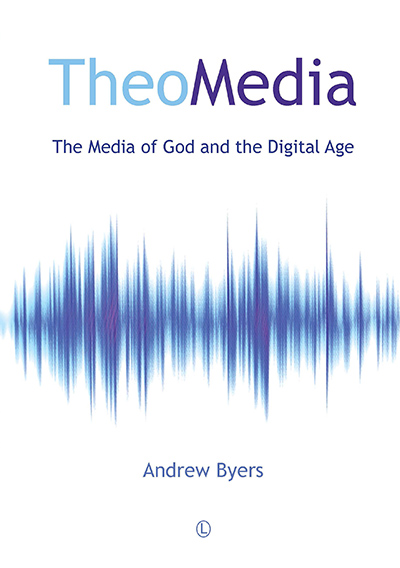Description
The seven deadly sins are pride, envy, anger, sloth, gluttony, greed, and lust. The seven virtues are prudence, fortitude, temperance, justice, faith, hope, and love. The Virtues and Vices in the Arts brings all of them together and for the first time lays out their history in a collection of the most important philosophical, religious, literary, and art-historical works.
Starting with the Greco-Roman and Judeo-Christian antecedents, this anthology of source documents traces the tradition of virtues and vices through its cultural apex during the medieval era and then into their continued development and transformation from the Renaissance to the present. This anthology includes excerpts of Plato’s Republic, the Bible, Dante’s Purgatorio, and the writings of Friedrich Nietzsche and C.S. Lewis. Also included are works of art from medieval manuscripts; paintings by Giotto, Veronese, and Paul Cadmus; prints by Brueghel; and a photograph by Oscar Rejlander. What these works show is the vitality and richness of the virtues and vices in the arts from their origins to the present.
About the Author
Shawn R. Tucker is Assistant Professor of Fine Arts at Elon University, North Carolina. He was recently the guest editor for a special issue of Interdisciplinary Humanities, and has received a National Endowment for the Humanities Enduring Questions grant to develop a course on Pride, Humility, and the Good Life.
Contents
List of Figures
Acknowledgments
Introduction
A House Divided
Virtues, Vices, Sins, and Gifts of the Spirit
Constellations
Part I: Foundations
Human Potential and Protection I
Human Potential and Protection II
Plato’s The Republic
Aristotle’s The Nicomachean Ethics
Cicero’s Of Duties
Proverbs
Isaiah
Matthew
Paul’s Letters
Part II: Codification of the Virtues and Vices
Tertullian’s The Shows
Prudentius’s Psychomachia
Evagrius of Pontus’s On the Eight Thoughts
Gregory the Great’s Morals on the Book of Job
Part III: The Medieval Apex
Divine Endowment
The Struggle
Contraries Cured by Contraries
The Summa
Psychomachia Illustrations
Illustrations of the Speculum Virginum
Hildegard of Bingen’s Ordo Virtutum
Notre Dame of Amiens Twelve Virtues and Twelve Vices
Giotto’s Virtues and Vices in the Arena Chapel
Dante’s Purgatorio
Ambrogio Lorenzetti’s Paintings in the Palazzo Pubblico, Siena
William Langland’s Piers Plowman
Geoffrey Chaucer’s “The Parson’s Tale”
Part IV: The Transformation of the Virtues and Vices
Divine Endowment II
Struggle II
The Virtues and Vices in Everyday Life and in Death
The Vitality of Vice
Piero del Pollaiuolo’s Seven Virtues
Andrea Mantegna’s Minerva Chases the Vices from the Garden of Virtue
Niccolò Machiavelli’s The Prince
Bernaert van Orley (Designer) and Workshop of Pieter van Aelst (Weaver) The Honors
Peter Brueghel the Elder’s Virtues and Vices
Edmund Spenser’s The Faerie Queene
Part V: The Tradition Extended
The Struggle III
The Virtues and Vices in Everyday Life and in Death II
The Vitality of Vice II
Benjamin Franklin’s Autobiography
Friedrich Nietzsche’s Beyond Good and Evil and The Antichrist
Kurt Weill and Bertolt Brecht’s The Seven Deadly Sins
C.S. Lewis’s Mere Christianity
Paul Cadmus’s The Seven Deadly Sins
Epilogue
Appendix: Key Virtues and Vices Works
Bibliography
Acknowledgment of Copyright
Index
Endorsements and Reviews
Tucker puts excerpts from philosophical treatises into conversation with religious and literary compositions. Even more interesting, he draws on key artistic works, paintings, and sculpture, allowing the reader to imagine other ways to think about ethical problems. With a useful and accessible introduction, not to mention shorter introductions for each reading, Tucker has constructed an excellent sourcebook for any undergraduate class touching on the history of ethics in the Western tradition.
Dallas G. Denery II, Bowdoin College, Brunswick, Maine
Shawn Tucker demonstrates how the concepts of virtue and vice are not only very relevant to contemporary Western culture but have a comprehensive, fluid, and contested history in art and literature. This interdisciplinary study of these core cultural concepts, and a serious inquiry into what behaviour we sanction and what behaviour we condemn, is a welcome addition to the study of humanities. Tucker’s lively introductions are especially effective at linking ancient texts and artistic works to modern ones, with generous nods to contemporary music, television, and cultural phenomenon such as fad diets and Christian rock.
Lee Ann Elliott Westman, University of Texas at El Paso
Shawn R. Tucker’s well-conceived sourcebook on The Virtues and the Vices in the Arts fills an important niche, and will be especially helpful for students just embarking on their study of the art and literature of European civilization. It represents a very useful compilation of key texts and illustrative artworks that document the historical conversation and debate about the moral life that has shaped the different cultures springing from Greco-Roman and Judeo-Christian antiquity.
Dwight D. Allman, Baylor University
Shawn Tucker has done a great service bringing together a variety of texts and images from the rich tradition surrounding the vices and virtues, texts as different as Plato’s Republic and Hildegard of Bingen’s Ordo Virtutum, and images as varied as Brueghel’s engravings of lust and anger and Paul Cadmus’s paintings of envy and pride. This anthology will be a welcome resource for students of history, philosophy, literature, and art.
Holly Johnson, Mississippi State University
In The Virtues and the Vices in the Arts, Shawn Tucker has brought together important works on the vices and virtues that outline the trajectories of the development, diversification, and sometimes reversal, of these lively concepts over more than two thousand years of human thinking about morals and ethics. … The sources gathered here present both nonspecialists and specialists with enough material to appreciate the diversity and vitality of the long-lasting debate on the nature of vice and virtue in Western culture.
Rhonda L. McDaniel, Middle Tennessee State University
Shawn Tucker’s anthology offers a delightful journey through classic works of philosophy, theology, art, and literature with a heavy dose of wit. The structure of the book is crucial to its success. … With its well-chosen selections, insightful argument, and memorable imagery, Tucker’s anthology is a useful collection for those interested in a wide variety of fields. Students of history or philosophy, art or literature, and theology or ethics will find value in the pages of this book, as it promises to serve as a resource to which they return again and again.
Derek R. Davenport, in Reviews in Religion and Theology, Vol 24, Issue 3






